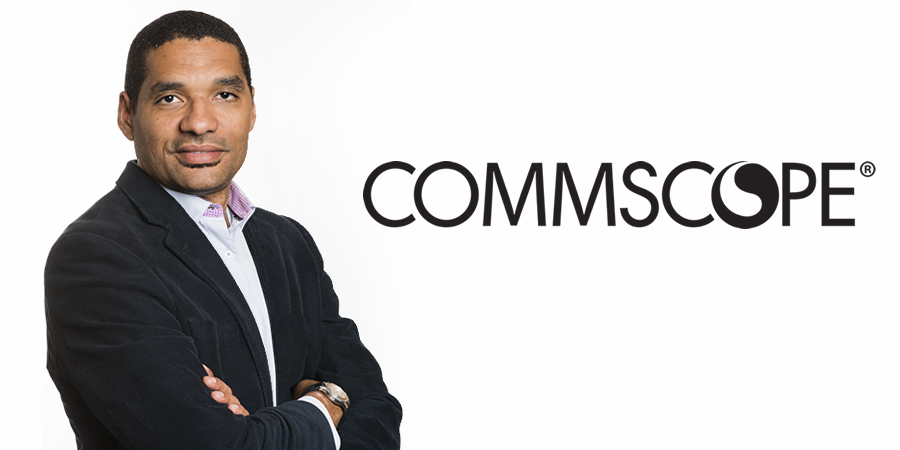CommScope has played a key role in shaping the digital future here in the region through positioning itself at the forefront of smart infrastructure through the products and services that it offers which have made communication easier, faster and more efficient. Its mission is to build stronger connections and shape the future of communication through optimizing bandwidth.
CommScope’s vice president of service providers of the Middle East and Africa, Femi Oshiga, sat down with Telecom Review to discuss the latest developments regarding 5G in the MEA region and the opportunities it presents.
How is CommScope shaping the digital future in the MEA region?
5G is here (albeit in small doses)! All the hype and irrational exuberance of a few years ago is turning into initial pilot deployments. It’s an exciting time, especially for those of us in the trenches of 5G development.
As network operators focus on achieving 5G performance, they’ll need to eliminate network bottlenecks by adding more small cells, more fiber and mobile edge computing to their networks. The industry has been most successful with deploying and utilizing more fiber. Many operators worldwide are committed to a fiber-heavy and fiber-deep future.The 5G future continues to shine brightly ahead and CommScope is a committed partner who will provide communications infrastructure to create the ‘”network of networks”, which will deliver higher bandwidth and lower latency than ever before.
In your opinion, what are some of the key trends in the Middle East’s current telecom ecosystem?
To prepare for a network which is 100 times faster than 4G, our customers are investing in innovation which increases capacity and offers spectral efficiency. Network operators must increase capacity and performance of existing technologies. As previously announced, CommScope is working with industry leaders like Nokia to help customers optimize tower space usage, increase cell site capacity and lay the groundwork for a 5G-ready future.
Although network operators in the Middle East are piloting 5G-ready technologies, we will continue to see investment in LTE for many years with 4G and 5G co-existing in the future. We will also continue to see more and more new spectrum open up to enable continued mobile broadband growth.
Have the needs of your clients changed over time? If so, how?
As the Middle East reduces dependence on oil and diversifies revenue streams, investment in the digital economy is paving the way for a future of connectivity.
As 5G promises to bring speeds that are 600 times faster than the typical 4G speeds on today’s mobile phones, service providers are testing new approaches to wireless performance indoors, where most mobile usage takes place. To keep pace with the demands of a modern society and expand into new markets, network operators in Saudi and the UAE are demonstrating use cases for next generation wireless technologies.
Do you think the MENA region is ready for 5G?
The 5G future has just begun across the Middle East and Africa. With the technology expected to contribute billions to economies around the region, network operators are rolling out pilot deployments and making investments in communications infrastructure.
For example, GSMA reported that local operators in the United Arab Emirates (UAE) are rolling out deployments in the second half of 2019. Saudi Arabia is releasing an additional 400 MHz in mid-band (3.5 Ghz) to commercial operators, while 10,000 basestations will provide the nation’s consumers with the region’s fastest and most extensive coverage,
As network operators test 5G use cases, they are proactively looking for ways to enhance consumers’ experience while creating new revenue streams. This includes augmented and virtual reality applications for mobile broadband and adapting to entertainment trends of the future. 5G could be a great technology to elevate electric sports (esports), professional gaming at a competitive level, across the region.
What are some of the key opportunities offered by 5G that CommScope could tap into in the future?
One of the benefits of shaping the future is that we have a clear view of the incredible progress we’re making in all areas of communications networking. Connected devices have changed how we all live. So now, with ARRIS part of CommScope, the new work begins.
- Early 5G trials are turning into deployments. 5G is ultimately a set of building blocks representing a variety of different technologies. It will create more bandwidth, higher speeds, more capacity, better coverage and improved spectral efficiency. At CommScope, we have an incredible number of combinations in this new toolbox.
- Broadband is getting so fast we had to invent a new way to measure it. Earlier this year, we announced the UK’s first real-world 10G EPON broadband trial with Virgin Media. Today, (50) households are enjoying some of the fastest symmetrical communications technology in the world. This technology is so fast that we had to help UK regulators create a whole new test to measure it… That’s a good problem to have.
- Innovative hybrid networks are creating new price/performance points for cost-conscious customers. One of the most creative network architectures we’re working with today is one that uses unlicensed CBRS spectrum with private LTE protocols. We have more than 20 successful trials underway, with more pending. The combination is proving to be especially effective for in-building wireless networks - which are a particularly thorny use case - as well as for extensions of cellular carriers’ macro networks.






